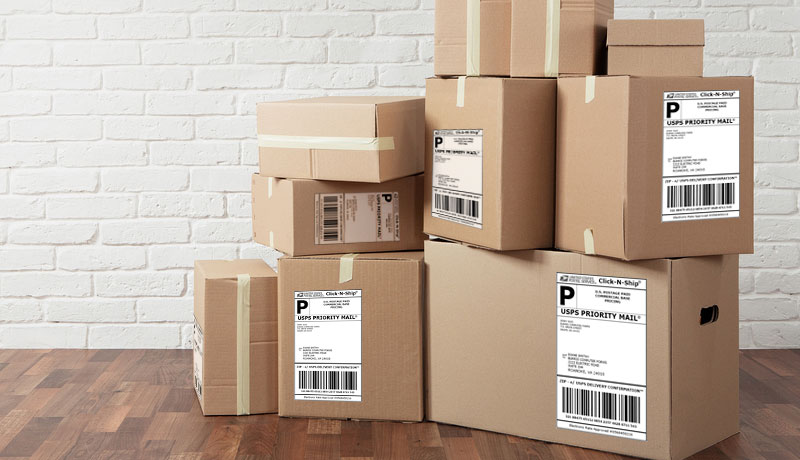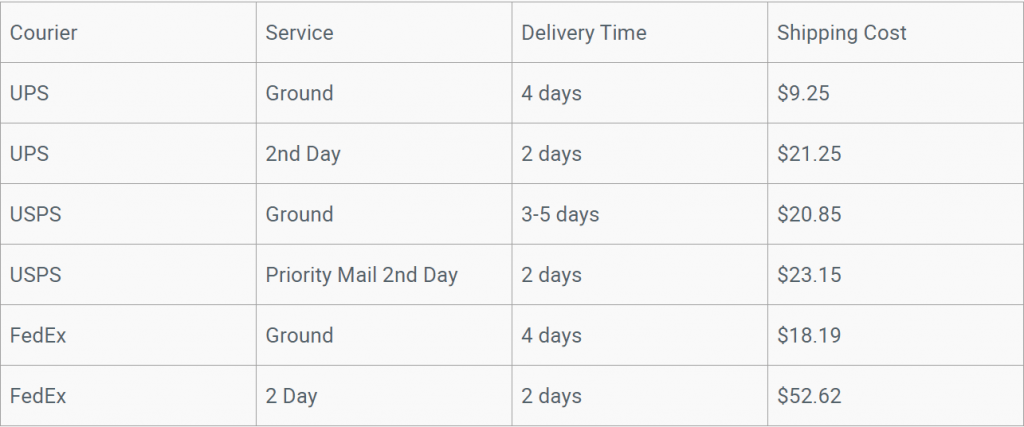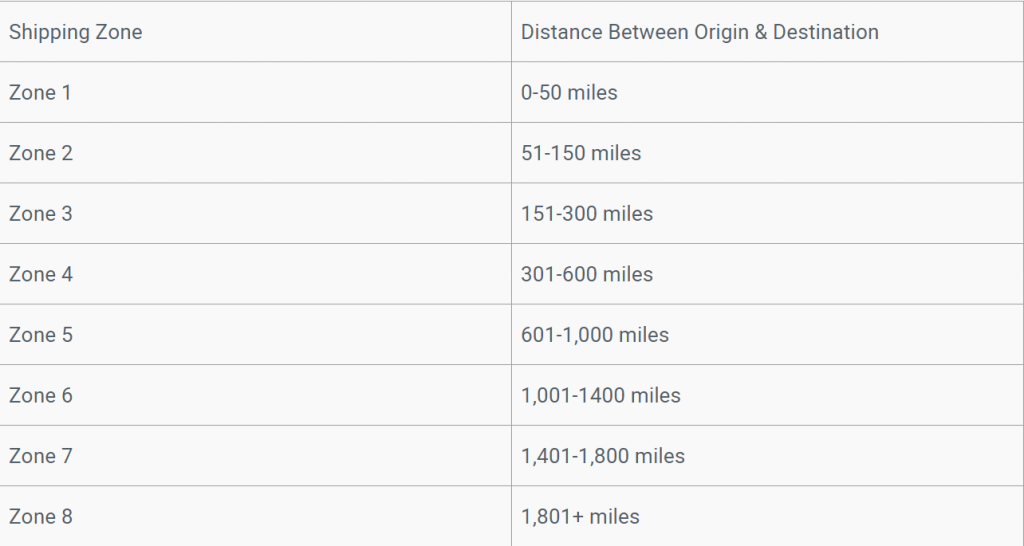Ever go through the entire process of picking your products online just to abandon the cart right before check out just because the shipping cost is higher than you like? Or ever choosing a more expensive product over a cheaper one just because the expensive one offers free shipping? That’s basically my mom’s whole online shopping routine, and I’d be lying if I say I have never done it. In fact, if I show you two identical products, one costs 10$ with 2$ shipping, and one is 12$ but with free shipping, I bet you’ll pick the 12$. It’s just how it works.

But what is the shipping cost then? How to calculate shipping cost? Or better yet, how to calculate shipping cost to the best of benefits for you and your customers? Don’t worry - this article will provide you all you need to know about calculating your shipping cost.
1. What is shipping cost?
Shipping cost, basically, is the cost of, well, shipping. To clarify, shipping costs are all the related costs involved in the process of moving a product from a warehouse to the customer’s address. To calculate shipping cost, you often need to consider factors, including but not limited to:
- Boxes, packaging and related costs
- Human labour cost - the cost for a worker to handle the product
- Transportation cost for courier companies
These are often the obligatory costs that are applied in any and all cases. Sometimes there can be additional fees based on the situation, especially if you are shipping internationally (taxes and duty fees), or if you are transporting expensive or valuable products (handling fees and insurances). If you are wondering how to calculate shipping cost, these are the things that you should always consider. Both you and your customers would want the shipping to be cheap, fast, and with minimal damage, so keep it in mind when you start to calculate shipping cost.
2. Why do you need to calculate shipping costs?
Remember what I said earlier, about how customers are more likely to choose a slightly more expensive product just because it has free shipping?
Yeah. That is why you need to calculate your shipping cost. Sure, customers like free shipping, but can you afford cutting the cost into your margins? Or should you include it in the product price and risk a higher pricing than your competitors? Or should you just put in a shipping fee and hope that maybe your customers are willing to pay for it? These are the questions every retailer wants to answer in order to decide how they want to calculate shipping cost.

If you see everyone offers free shipping, it’s tempting to do the same. But if you are a small business with small margins, it’s not sustainable and you’ll be broke in the long run. You need to go through the entire process and calculate shipping cost before you can decide what to do. And if free shipping is not on the table, you can consider providing shipping options for customers at the checkout page, so that they see the transparency in your business and also have the feeling that they can choose - which makes them more comfortable with paying shipping price.
3. How to calculate shipping cost?
There are three ways to calculate your shipping price: Calculated shipping, flat-rate shipping, and free shipping. These options have their own bonuses and drawbacks, so if you want to calculate shipping cost, it’s best to take into account all the advantages and disadvantages of all three options.
Calculated shipping
This method will be product-based, meaning, each product will be measured and have their own customized shipping price based on their weight and dimension. This method is best for you, the seller, because you don’t have to worry about cutting off your margins to pay for the transportation - every penny of the shipping price is on the customers. And basically, every courier has a shipping calculator to calculate shipping cost for you if you choose this method. However, it will be more work on your end, because every single product that you sell needs to be measured and you need to calculate shipping cost separately for each product. If you sell a wide variety of products with different sizes, well, let’s just say it’s going to be a lot of work. Not to mention the process to calculate shipping price when customers buy more than one product.
Another downside of this method is that your customers will never know for sure about the shipping prices until they reach the checkout page. Many won’t like that, because they’d feel like being lied to. Sure, they will get a personalized shipping cost based on what they decide to purchase, but not knowing the shipping cost beforehand and then finding out different products have different shipping prices? No one likes that.
Flat-rate shipping
Well, if no one likes finding out different products have different shipping prices, what do they like then? A unified, single, one-size-fits-all shipping price. Flat-rate shipping is when you only charge one shipping price for any order - no matter the size and weight and the amount of product is in that order. The only thing that can vary in flat-rate shipping is the price based on distance - if the delivery point is further, the fee is higher.
Most customers prefer this one - because it’s straightforward and the customers don’t have to bother to calculate shipping cost for every single product that they buy. It’s easy for them, and at least, in their mind, this is fair, convenient, and reliable. For you, however, flat-rate shipping can be a little bit tricky to calculate shipping cost. In order to be able to use flat-rate shipping, you must calculate shipping cost for every product that you sell, and then find the average for the whole store. The tricky thing is to find a price that is reasonable for every product and doesn’t cut into your share of the margins. This is easier if everything you sell is somewhat similar in size and weight, but if they are vastly different, it’s going to be harder. And if the shipping rate changes, you must make adjustments as well.

Free shipping
Ah, yes. The Holy Grail of online shopping. If I see free shipping, I’ll click on it. I’m a simple person like that. Free shipping is the to-go option for customers, and it’s a great way for you to increase and promote sales. For you though, free shipping might not be that sweet of a deal.

Of course, like humanity, shipping can never be “free”, so if you want to offer free shipping, you need to calculate shipping cost into either one of these options:
- Include the shipping cost into the product pricing: This is often used if the shipping cost is not too high, because it often comes with little risk. As you know, customers will be prone to choosing a product with a slightly higher price if it comes with free shipping, so it’s a risk worth taking. However, if the price is too high, calculate shipping cost into the listed price can make your product be significantly more expensive than that of your competitors, which in turn can make you lose out on potential customers
- Absorb the shipping cost by cutting it in your profits: This is also a great way of making the shipping “free” for your customers, but it’s only applicable if you make a decent amount of profits and the shipping price is not off the chart. If you want to absorb the shipping fees in its entirety, remember to calculate shipping cost carefully and work on the profits you make per product - or else you’d go bankrupt.
- Include the shipping cost in the product pricing AND absorb it into your margin as well: So, the shipping cost is too high to be included in the product, and your profit is not enough for you to absorb it, but you still want “free shipping” for your customer? Well, why not both? Calculate shipping cost, divide it and work half of it into your product pricing and the other half into your profit. That way, your product won’t be overpriced compared to the market, and it won’t cut too deep into your margin. Granted, it’s going to be a lot of math and numbers and calculating, but you can guarantee free shipping and your customers will feel very happy. It’s like, win-win-win.
4. What do you need in order to calculate shipping cost?
Alright, sure, we have talked about why you should calculate shipping cost and the ways you can calculate shipping cost. Now let’s dive into the real stuff: what actually is the process to calculate shipping cost.
Most couriers and transportation companies have their own pricing rates, which is based on a lot of factors. If you want to calculate shipping cost, you need to know all of these beforehand.
Weight
Some of the couriers require weight and dimension in order to calculate shipping cost, but some of the couriers will require only weight or dimension. If you have a small but heavy item, then choosing to calculate shipping cost by weight can cost you more than it should have. Choosing to calculate shipping cost by weight is rather easy, really - just weigh it and put the number into the calculator of the transportation companies of your choice.
Just remember, when you calculate shipping cost by weight, you should measure the weight of the parcel, not the product. Meaning, you have to take into account the weight of the boxes and packaging, not just the product. It can increase your shipping cost a little bit, but just because it’s more expensive, doesn’t mean you should be lazy and hold back on the packaging. A sturdier packaging is worth a few pennies.
Dimension
Even though sometimes weight is optional for couriers to calculate shipping cost, dimensional volume is almost always required in order to calculate shipping cost. Why? Because they need to know the exact dimension of a package so they can better fit it inside a cargo.
Dimensional volume is calculated by multiplying the height and length and width of the package. It is especially easier for the courier to use dimensional volume than weight because most of the time, objects are odd-shaped and need proper packaging in order to be put inside a delivery truck or a cargo compartment of a plane. Use shipping cost comparison to find out which companies offer the best deal.

Distance
Obviously, the thing that affects how you calculate shipping cost most is the distance between the shipping point of origin and the final destination. Shipping in-state will definitely be cheaper than shipping cross-country, and shipping cross-country will definitely be cheaper than shipping internationally. Each company will have their own way of dividing and calculating the distance, along with how to charge. Here is the US delivery zone, but different countries may have their own way of calculating delivery distance.

Time
Ever need something so desperately that you choose Same-Day Delivery? Notice how much more expensive that is compared to your normal No-Rush Shipping, which can take weeks, or even a month to come?
Faster shipping requires more expensive services - like overnight shipping, airplane transportation, while no-rush shipping products can just leisurely travel by cargo ships. Therefore, when you calculate shipping cost, shipping time should definitely be considered. However, this factor should be left entirely for your customers to choose from based on their own needs. And if they really need fast shipping, some extra fees won’t be the problem that they are worrying about.
Extra fees
It ain't life if there are no extra fees somewhere, am I right? So of course there are going to be extra fees when it comes to shipping, and when you calculate shipping cost, you definitely need to take these into account also.
- Shipping insurance: This is entirely optional, but it’s often (and should be) used for expensive items. Sure, insurance costs are not cheap - most couriers charge 3% for insurance. But it’s good to know that your valuable items are protected against loss, theft, or damages, isn’t it?
- Handling fees: Sometimes your product is not entirely safe to handle - like needles or guns or explosives or chemicals. Or the most dangerous of all: lithium batteries. If you are transporting these “high-risk” items, you need a special sticker and extra fees for workers to handle those. Another type of handling fee is for bulky items: like furniture or big electronic devices.
- “Mistake” fees: Mistakes happen. Sometimes parcels are not received, sometimes packages are returned, or sometimes packages take more than one time to be delivered, they cost extra fees too. Whether these fees fall on you or your customers depends on the contract between you and your customers, but when you calculate shipping cost, you should always take these into account.
- Pick-up and fuel fees: Sometimes, you have to deliver to somewhere so remote, that it’s barely even on the map. Hardly any courier offers regular shipping service there. That’s why, if you have to send your package to a remote area, the shipping company will charge you more. And of course, you know about the whole fuel deal: it changes the price daily. Fuel fees are often adjusted daily to match the ups and downs of the oil market, and it varies between different countries, so it’s best to pay attention to these when you calculate shipping cost.
5. Bonus: Calculate shipping cost internationally
So you are selling cross-border. Congratulations, that’s a huge success! Now, it’s time to consider shipping internationally, and how to calculate shipping cost trans-national. The landed cost - the final cost when your product arrives at your customer’s doorstep, is much more than transportation fees. You also need to factor in duties and taxes, currency conversion, and so on. There are Delivery Duty Unpaid (DDU), which means your customer will be in charge of paying all duty and fees to the import country custom; and Delivery Duty Paid (DDP), which means you are the one responsible for paying taxes and duty. The process to calculate shipping cost and determine landing cost is not always easy and straightforward, and it can be tricky if the destination country is strict about imported goods, so you need to be upfront and transparent with your customers about the shipping fee beforehand.
Conclusion
In the times where online shopping is taking over, shipping has slowly become an indispensable service for all of us. Therefore, knowing how to incorporate and calculate shipping cost is a must for any business that wants to get up and running. Of course, to calculate shipping cost is not easy, but if you figure it out, your business will sail smoothly. However, if you still feel confused, you can check out our QuickBooks extensions: QuickBooks Desktop Integration and QuickBooks Online Integration. These are the accounting modules that can help your work easier, including but not limited to helping you to calculate the shipping cost. Go ahead, and have a smooth sail! (Get it, because ship? No? Okay.)












